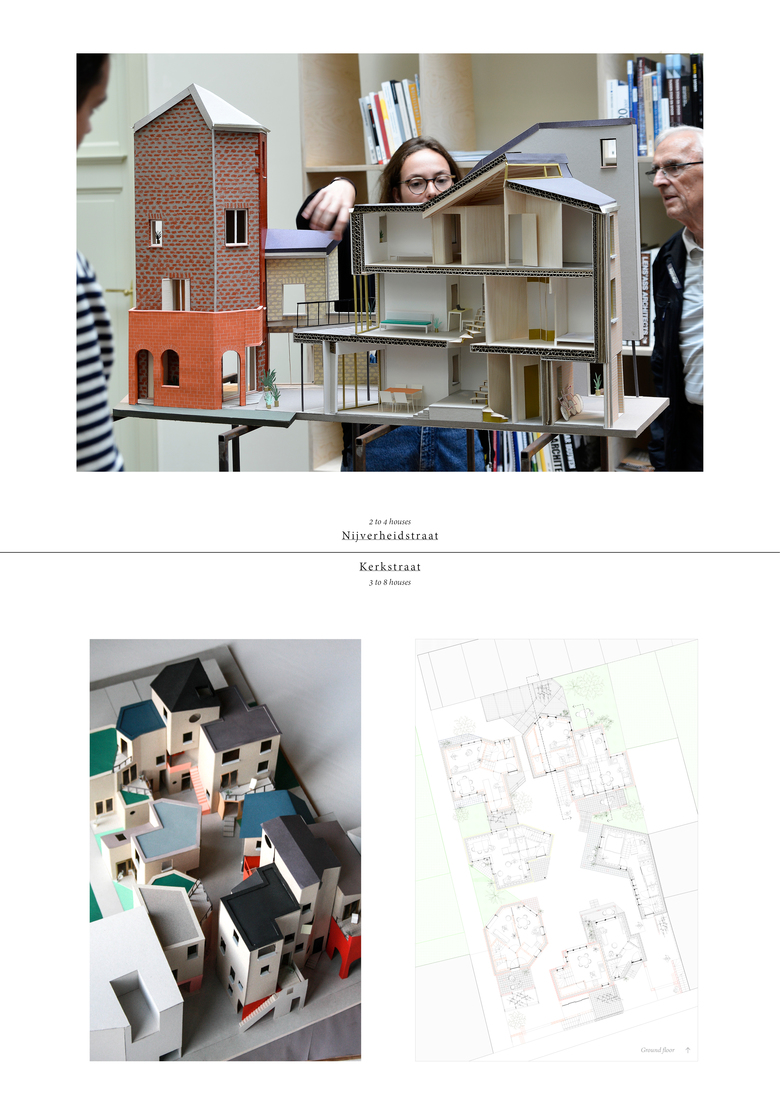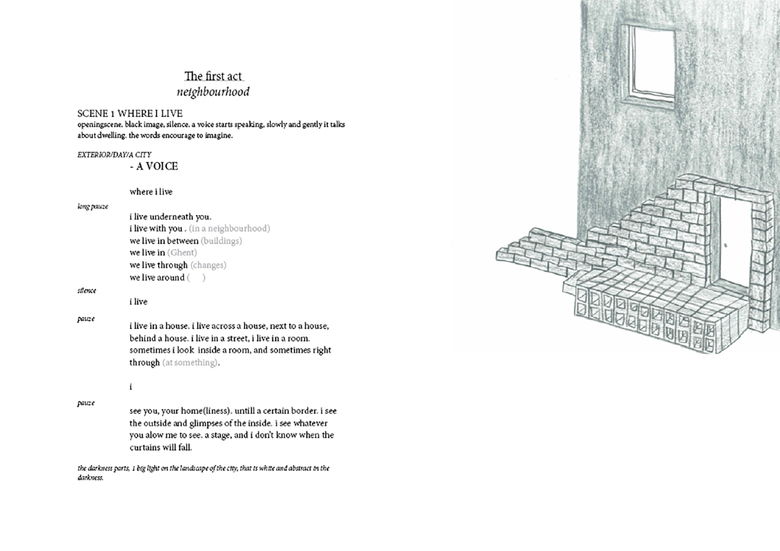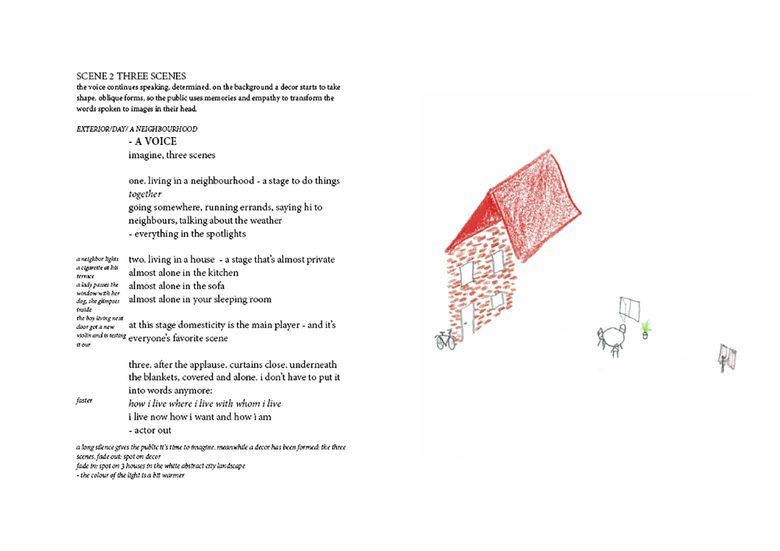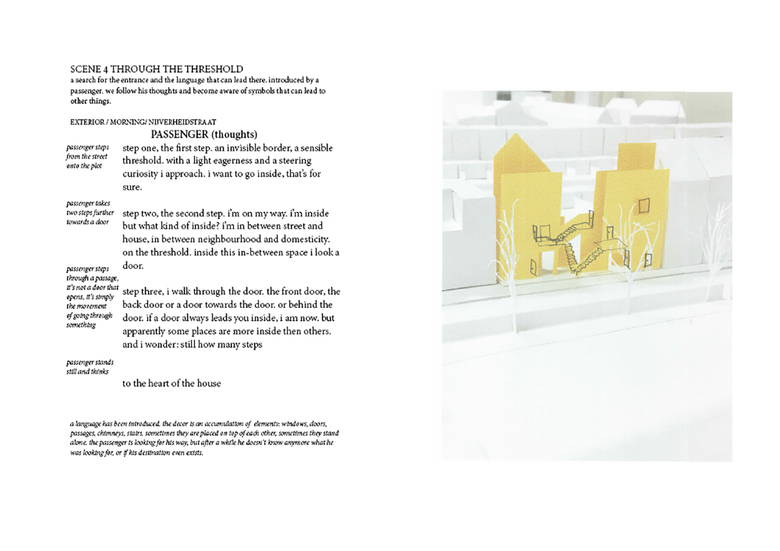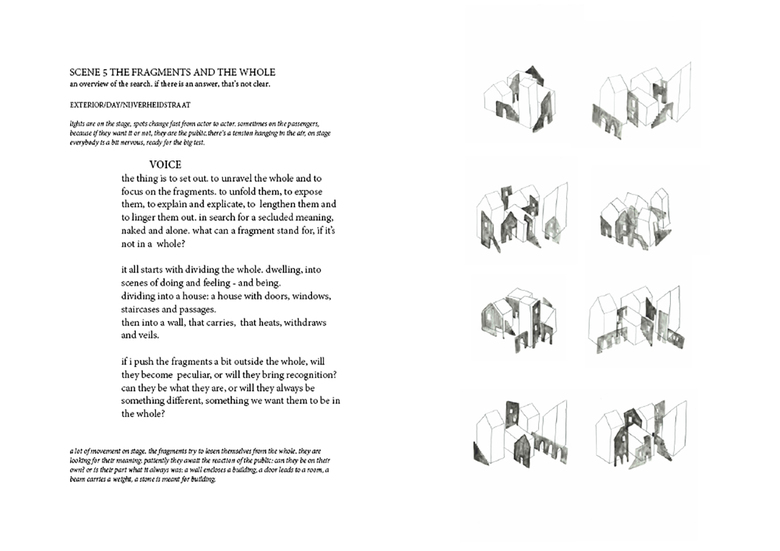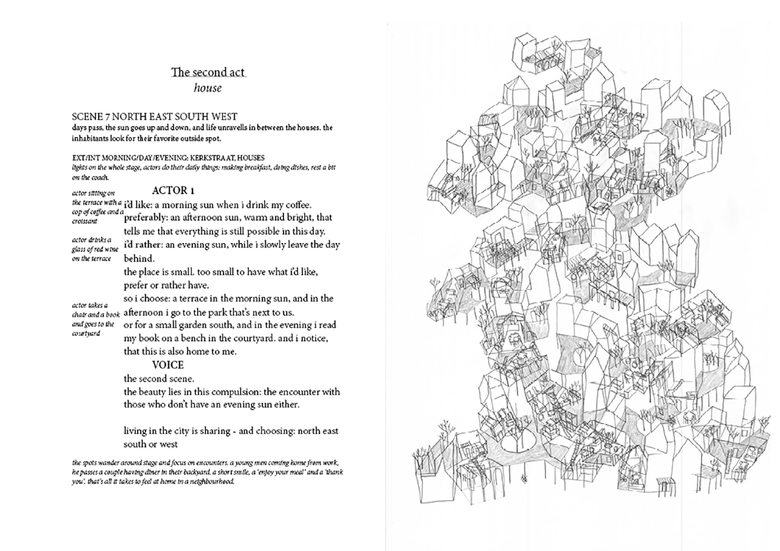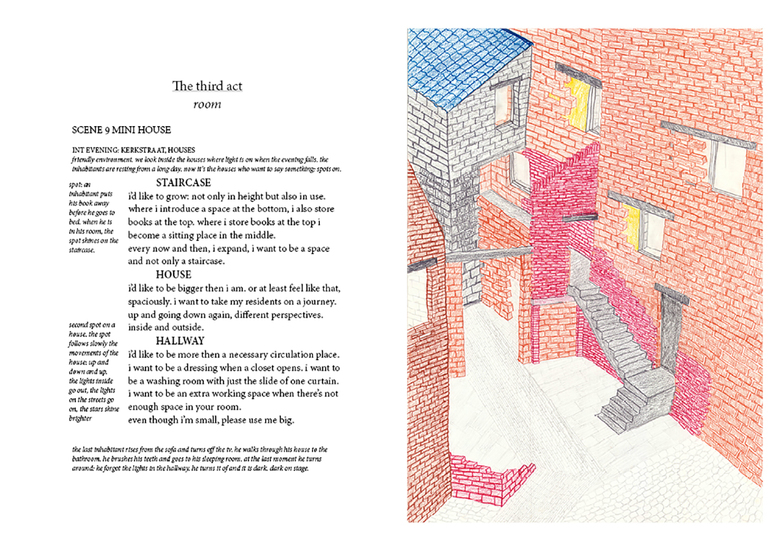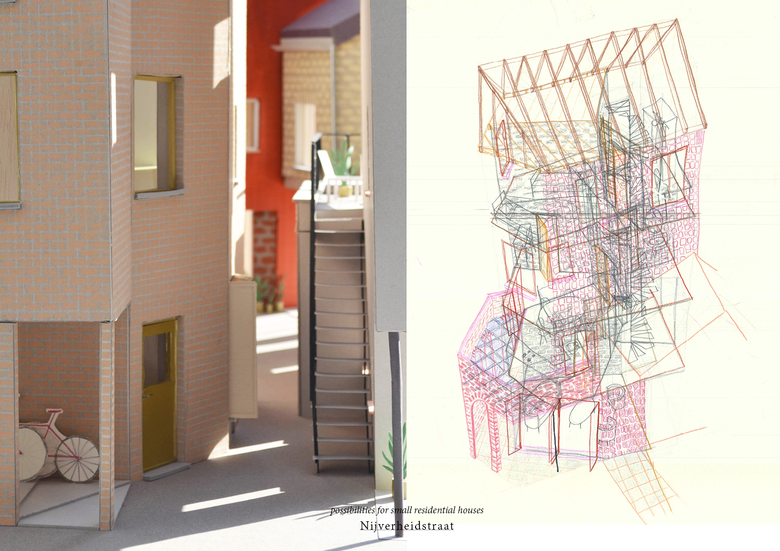May I use the front/backdoor?
Possibilities for small residential housing
The aim of this project is to develop a strategy for city densification. By looking at existing plots and houses in the city, 2 new proposals arise with different demands. Smaller houses for young families, still ground bound. How to create a sustainable and qualitative living environment, a place to call home? Identity is the answer given.
This project is about city densification. "The city of Ghent launches numerous projects for its city using its own developer SOGent. One is the KAVEL project. The city buys up property and divides these sites into smaller plots, which can be bought at low prices by young families. Therefore they must build their homes with architects listed by the city. A better architecture for a better price. An ambition without precedent." - Jan de Vylder, studio teacher It's also about how to measure architecture. What is a good house? One where the inhabitants live for a long time? One that is so small that they can built two? One that is cheap, accessible for all in society? An investigation through a reconsideration.
The start. To comprehend what dwelling is, I made a script for small houses. In this script, 10 scenes come forward. Every scene handles a specific theme of dwelling and how I think it’s important. The first act: the neighborhood Where dwelling starts. An investigation of faces, facades, and how certain typological elements or symbols can be used as a strategy to let houses express an identity. If houses speak, and the space in between the houses is a discovery, a neighborhood gets alive, and life inside the houses also gets nicer. The second act: the house A second movement towards the inside. The scenes tell how residents can experience their house and what spaces are necessary to live pleasant. Which spaces can be shared, and which spaces are necessary to be able to create your own place? The third act: the room The small room in this case. But she can feel great, be so much more then just a room. These scenes are about how rooms can be used, and the relation of the resident to its house. The result. A plot where once where 3 houses designed, has now a design for 8 houses. I used the architectural language that I developed during my investigation to create a qualitative densification. This led to 8 houses with each a strong identity. The second plot was a collaboration with Bram Van Roey. We developed 4 houses for a plot with 2. The focus in the design lies on the strong development of the space in between the houses: a courtyard. The conclusion. Dwelling is not something that only happens inside your house. It happens in a city, in a neighborhood, in a street. The space where you live is as important as the house where you live in. My answer to densification is identity. Every space becomes a place. A place to be, to sleep, to dwell. A place to live.
